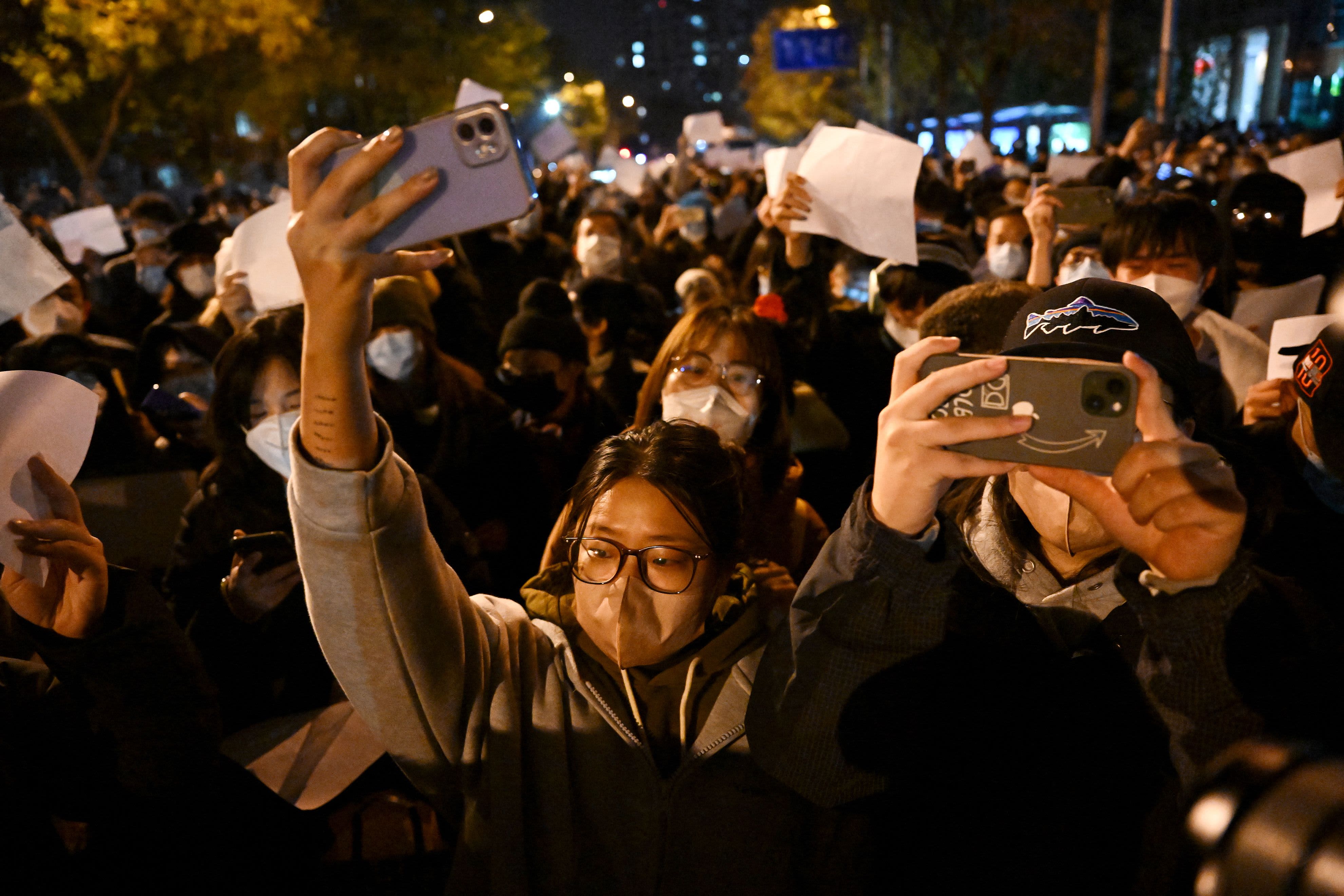
Protests in China have attracted international attention as the greatest challenge of President Xi Jinping’s premiership and a major knock to the Chinese Communist Party’s (CCP) longstanding authority.
But their spread within China was partially hobbled by a key change in Apple‘s AirDrop feature, launched just weeks before the unrest.
AirDrop, which allows users to share content between Apple devices, has become an important tool in protestors’ efforts to circumvent authoritarian censorship regimes over recent years.
That is because it relies on wireless connections between phones, rather than internet connectivity, placing it beyond the scope of internet content moderators. It uses Bluetooth to form a peer-to-peer Wi-Fi network between two devices.
The tool was used widely during Hong Kong’s 2019 pro-democracy protests, when demonstrators would share messages and protest literature with passers by and visitors from mainland China through AirDrop’s open network.
More recently, in mid-October, AirDrop was reportedly used to disseminate messages based on banners produced by a Beijing demonstrator known as “Bridge man.”
China-only software update
However, it was limited earlier this month, when a Nov. 9 update to Apple’s global operating system, iOS 16.1.1, included an additional AirDrop feature applying only to iPhones sold in mainland China.
Under the update, iPhones can now only set their AirDrop to receive messages from “everyone” for 10 minutes before switching off. The other settings allow for file-sharing between “contacts only” or “receiving off.”
Apple did not immediately respond to a CNBC request for comment. In an online statement, the company said the software update includes “bug fixes and security updates and is recommended for all users.”
The change was first noticed by Chinese readers of fan site 9to5Mac, as reported by Quartz, and doesn’t currently apply to iPhone users in other countries.
According to Bloomberg, Apple plans to make the update a global feature next year.
Quashing swelling dissent
The timing of the release is not insignificant, coming a month after Xi broke precedent and paved the way for his third term as China’s leader.
The move was met by rare displays of public dissent; a precursor to wider demonstrations last weekend.
Still, while the unrest has been well-documented in the international press, coverage within China has been limited, and some have argued it could lead to a greater crackdown on dissent by authorities.
“It raises the pressure on Xi Jinping, and I think likely puts him towards a more authoritarian approach to governance in China,” TS Lombard’s Chief China Economist Rory Green told CNBC Monday.
Meantime, Apple has a history of adapting its products and services to conform with China’s strict controls. Last year, the company excluded users in China from a new feature designed to give users more privacy when browsing the web. Meanwhile, in 2017, Apple pulled several virtual private network (VPN) services from the local version of its App Store in China.
China accounts for a growing portion of Apple’s consumer market, with iPhones accounting for 16% of the total smartphone shipments in China last quarter, up from 11% a year ago, according to Canalys data.
Source: CNBC
